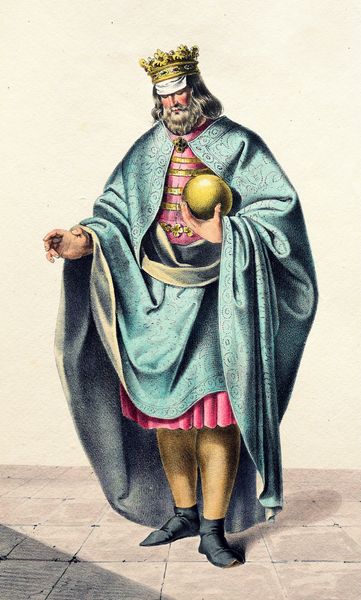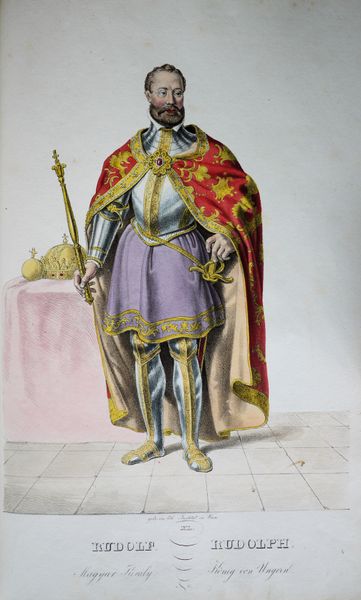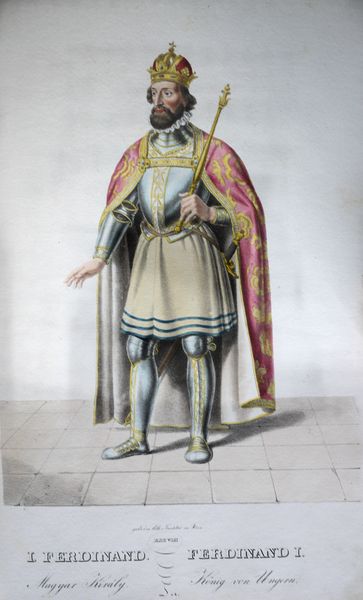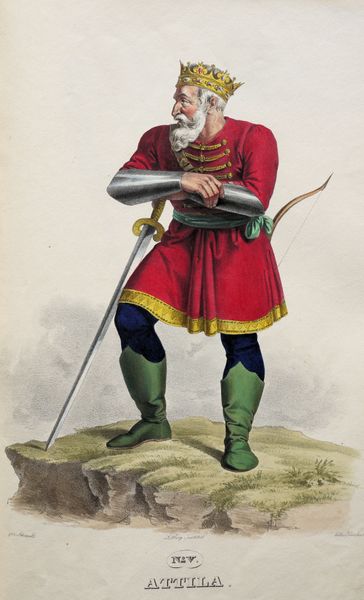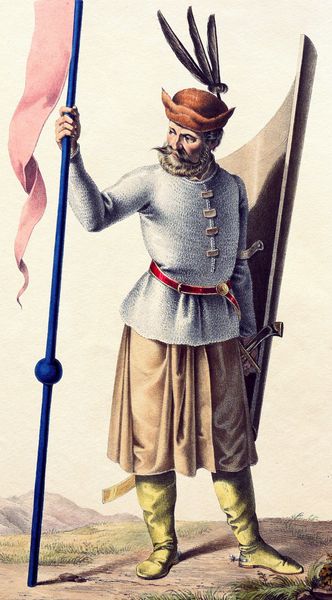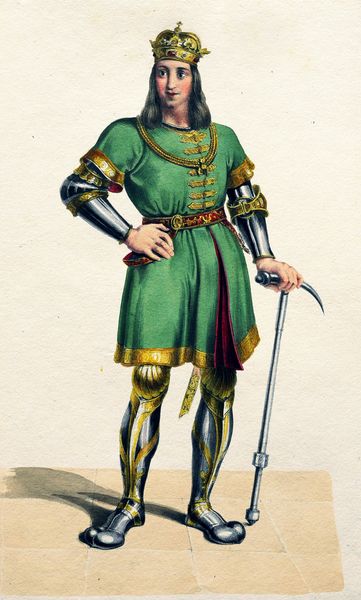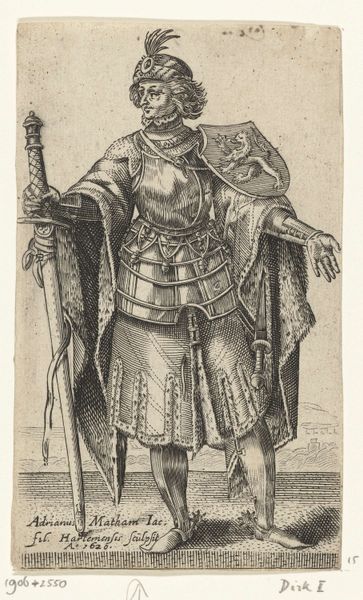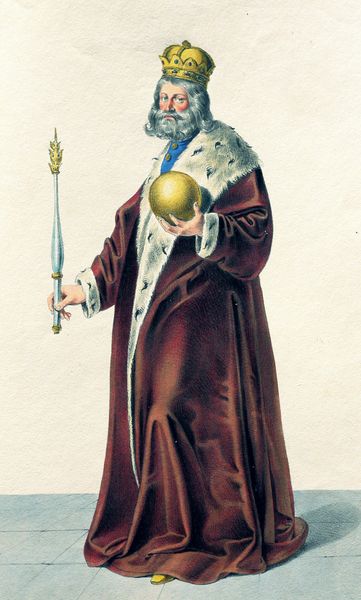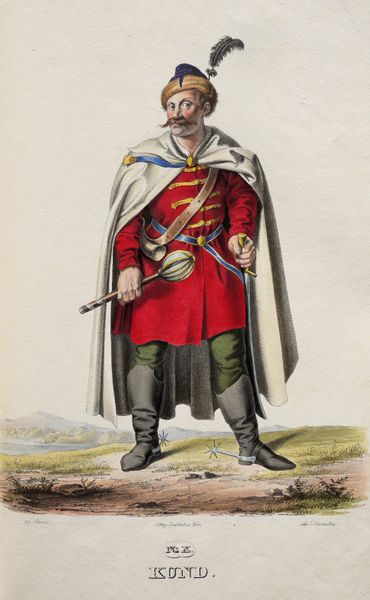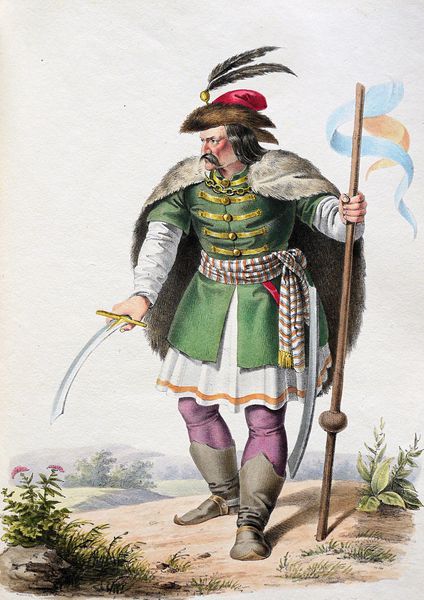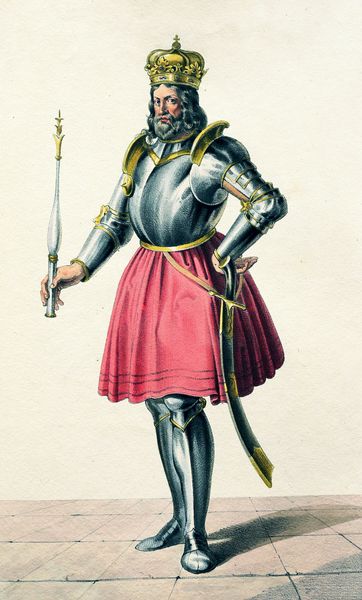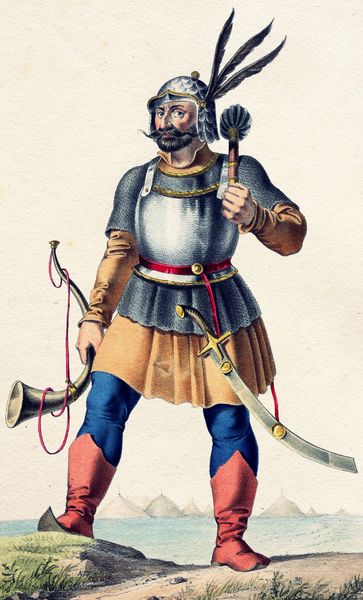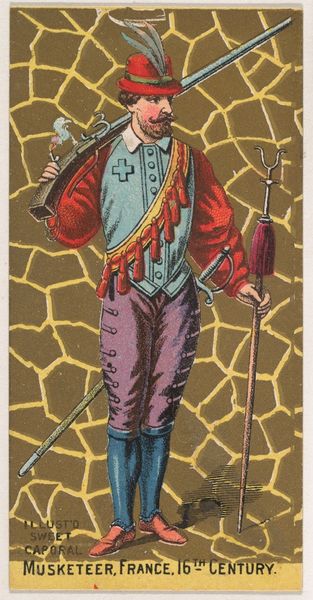
oil-paint
#
portrait
#
oil-paint
#
oil painting
#
portrait reference
#
romanticism
#
history-painting
#
academic-art
#
surrealist
#
portrait art
#
fine art portrait
Copyright: Public domain
Curator: Here we have Josef Kriehuber's 1828 painting of "Sabolch, legendary Hungarian military leader." The portrait gives us an interesting window into 19th-century historical romanticism and ideas of national identity. Editor: It’s quite striking! The composition relies so heavily on contrasting colours - the bright blue coat against the yellow boots, for example - that it almost feels theatrical. Curator: Absolutely, that's Kriehuber playing with visual tropes to establish a heroic image. He’s depicting Sabolch, an almost mythical figure, as a symbol of Hungarian strength and historical continuity. Editor: I agree about that careful construction; every detail is quite deliberately placed to guide the viewer's eye around the figure and focus ultimately on the subject’s face. Curator: Consider the symbolism too – the figure's traditional Hungarian attire connects him to a powerful past, legitimizing contemporary nationalistic sentiments of the period. This wasn’t just portraiture; it was nation-building through imagery. Editor: But formally speaking, there's an interesting tension. Look how the folds of his white cloak create diagonal lines which are in sharp contrast with the straight vertical lines of his uniform and the central placement of the subject within the picture plane creating visual harmony... but I feel as though it contributes more of a static effect in which Sabolch seems captured more as symbol. Curator: The artist creates Sabolch as timeless embodiment of the nation and serves as an interesting intersection of romantic aesthetics and emergent nationalist ideology. Editor: Agreed, the colour scheme combined with the lines of the work create a work very rich with interesting form. But I also cannot deny, it feels...flat. It doesn't offer quite the perspective and tonal contrast I expect. It seems we should be considering some semiotic deconstruction if we really want to crack the code behind it. Curator: Exactly, which underscores how visual choices are never neutral. Each line, each color, they’re all contributing to the political narrative Kriehuber crafts here. It really highlights how the formal elements reinforce historical narratives. Editor: That definitely encourages us to look at historical events of the time and see how its themes interact! Thank you! Curator: My pleasure, these pieces encourage so much discovery, even now.
Comments
No comments
Be the first to comment and join the conversation on the ultimate creative platform.
